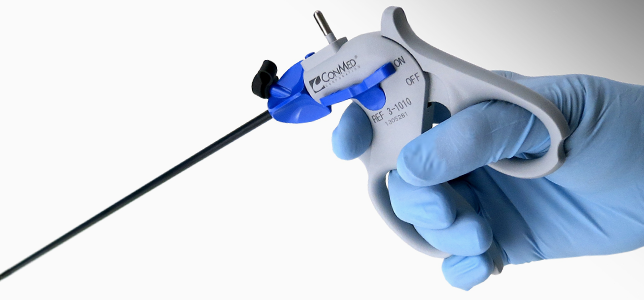It was not that long ago that when a client mentioned the words “plastic part” with “steam sterilization,” the only medical device material options that came to mind were high-end plastics like PPSU (Radel®) and PEEK. Yes, those materials are expensive in the plastics world, but they work and are known quantities. As my college statics professor always said, “When in doubt, build it stout, out of things you know about.” Good advice, unless cost suddenly becomes priority number one. Increasingly today, polypropylene (PP) is successfully going toe-to-toe with far more costly materials in the steam-sterilized medical device market.
I’m one of those odd engineers who actually enjoy going to plastic compounder conferences for material technology updates. Over the past few years, PP has shown up more often in the high-performance technical offerings in which durability and steam sterilization are combined requirements. What’s not to like? PP offers strong resistance to steam sterilization, very low cost, a wide array of mechanical performance characteristics achieved through different additives, and even recyclability for increasingly landfill-averse European markets. PP also has one major advantage that the others are still trying to figure out: soft elastomer overmolding that is chemically bonded. More on that later.
I was curious, so I went to Matweb.com and looked up the overview of mechanical properties for a few of the more popular steam-resistant plastics used in structural components.

As you can see from the general numbers listed above, PP is not that far off from the other materials in terms of strength, particularly when you start adding glass. There are also more exotic ways to strengthen PP, like adding long glass fiber or carbon fiber, but then you lose the cost benefits and molding tool life. Now, would I go out and replace every laparoscopic scissor/grasper handle with PP? Probably not, considering the high loads and precision feel required in those tools. However, there are plenty of other, less functionally critical medical device parts that should be considered. As I wrote in a previous blog, Intelligent Engineering: Utilizing Data to Impact Tomorrow’s Design, finite element analysis is a helpful tool for making material decisions by providing preliminary feasibility simulations.
Recently, I worked on a grip component that was a legacy part made from injection-molded PPSU. While surgeons do grip this particular part, there are no major bending loads translated through it. The designers refined the ergonomic shape while I worked with material suppliers to come up with the ideal steam-capable plastic and overmolding. In the end, we reduced the cost of goods by many orders of magnitude by using 20 percent glass-filled PP combined with a soft durometer thermoplastic elastomer (TPE) overmold to eliminate a couple of O-rings. The product requirements called for the part to function after 10 steam sterilization cycles, and this particular part passed without any issues (it probably could have tolerated more). It will be packaged and sold as a disposable, but many European hospitals tend to sterilize anything that still looks usable, so we determined that surviving 10 cycles would be appropriate.
In terms of overmolding, PP is the Holy Grail of materials. Most of the higher-performance and lower-durometer-range TPEs are polypropylene based, which makes it much easier to bond hard materials to soft. For overmolded seals in particular, TPEs unlock design freedom that was thought impossible just a few years ago. Granted, overmolding requires another tool, but with low material costs and the highest-quality design it affords, overmolding pays for itself quickly. I understand that great strides have been made with bonding silicone to PEEK and PPSU, but again, those are more costly materials whose high level of functionality is not always required.
I’ll admit that PP is not all unicorns and rainbows. While it flows like water during molding, sink marks, swirls in the surface finish from glass reinforcement, and shrinkage can be significant challenges. Also, the inherent flexibility of PP needs to be considered when the user’s feel is a high priority, but 20 percent glass-filled is a good compromise between tool life and product rigidity. Heavy walls are another limitation of PP. I worked on ConMed Corporation’s DetachaTip Laparoscopic Instrument not too long ago, and specific sections of that handle were over 0.25 inch thick. We could have “faked” thickness with ribs, but a ribbed part doesn’t always feel or look the same as a solid part. Consequently, we made that handle from injection-molded PPSU.
In closing, this is why I love polypropylene:
- Let’s be honest. It’s cheap!
- It withstands repeated steam sterilization cycles like many highly engineered plastics.
- With the right combination of additives, polypropylene can be made strong, and more importantly, stiff.
- You can overmold directly to it with PP-based TPEs that will also survive steam.
- Creative designers can work around many of the molding and mechanical performance shortcomings.
- It’s one of the most widely recycled materials, so it can be used to accommodate sustainability goals. .
